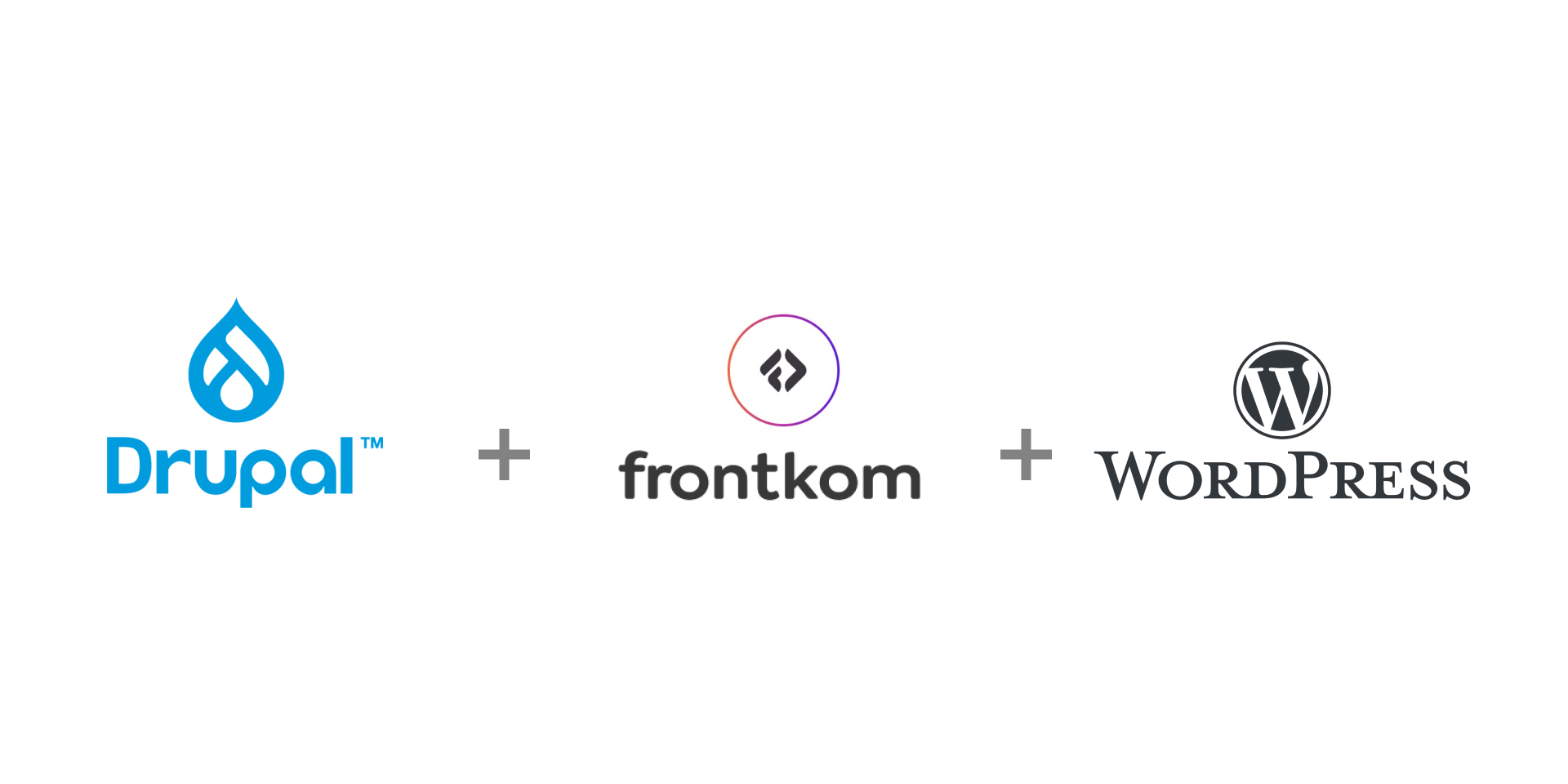Client
Jøtul Group
Industry
Producer of stoves and fireplace inserts
Assignment
Digital architecture serving multiple markets in several languages. High security demands, different themes, local content administration. Wide product range and high number of media assets. Sustainability strategy.
Technology
Drupal Multisite
Drupal Gutenberg
InRiver PIM
The project:
- 40 websites – one codebase
- Multiple countries, some multilanguage
- Different themes
- Local content administration
- High security demands
- Strong, distinctive brand
- Wide product range
- Product data must always be updated on all sites
- High number of media assets
- Defining and communicating sustainability strategy
1853
Year of establishment
45
Countries of operation
40
Websites
1
Codebase
Norwegian craftsmanship on fire
Jøtul is one of the world’s oldest producers of stoves and fireplace inserts. Frontkom is proud to deliver their complex website structure on Drupal with InRiver PIM integration.
Powerful, reliable systems are essential for Jøtul to communicate and maintain their strong, distinctive brand and extensive product range across 40 websites.

Drupal Multisite
Operating in international markets with a wide product range, Jøtul is dependent on a powerful, reliable content management system. The best choice to meet their high expectations and complex demands is Drupal CMS.
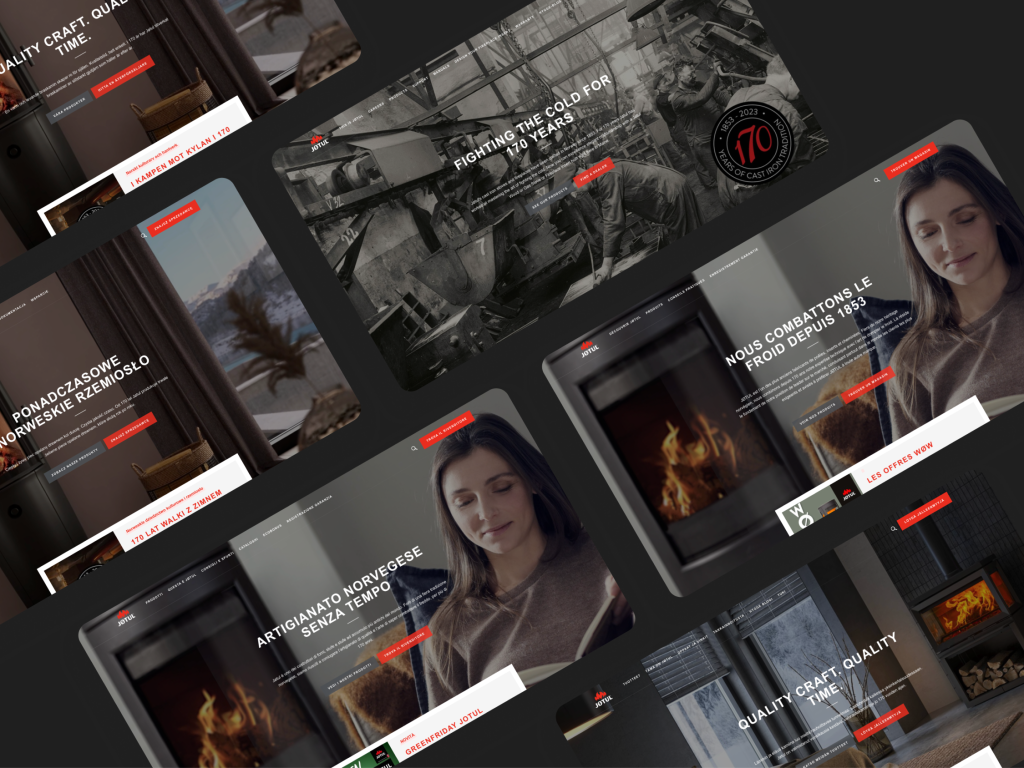

40 websites – 1 codebase
The websites represent and communicate Jøtul’s many smaller and larger brands in multiple countries, several languages and to a variety of clients and target groups. Drupal CMS gives Jøtul the opportunity to serve their 40 different websites on one codebase.
To manage a large number of websites requires a complex setup and a certain level of technical expertise. When the investment in a good codebase is done, the sites are both easier and more effective to serve. All Jøtul websites all have the same structure and nearly the same functionality, while the theme varies between sites. The opportunity to manage all sites from the same setup, makes maintenance and development easier and more effective, but also more secure.
One codebase allows for all updates and general maintenance to be performed across all sites at the same time. Managing Jøtul’s complex website structure on Drupal multisite guarantees for low risk and high quality. Drupal multisite is the right choice for high security standards, as updates are easy and effective and can be deployed across all 40 sites at the same time.
Drupal Gutenberg
As Jøtul communicates a number of brands to a variety of markets, it is a necessity to be able to administer content locally.
Managing content locally
As local marketers are responsible for parts of the content in their separate markets, Drupal Gutenberg is an important addition to Jøtul’s websites. It is easy to learn for new editors, also for those with previous experience with WordPress sites.
Local marketers can administer their content easily using Drupal Gutenberg blocks designed to communicate and maintain the brand identity across all Jøtuls websites. Gutenberg gives local marketers freedom to produce and publish content without being able to go beyond Jøtul’s design manual.
The advanced features and unlimited functionalities of Drupal multisite, combined with its flexibility and simplicity with Gutenberg blocks, make Drupal CMS the obvious choice for a complex website structure such as Jøtul’s.
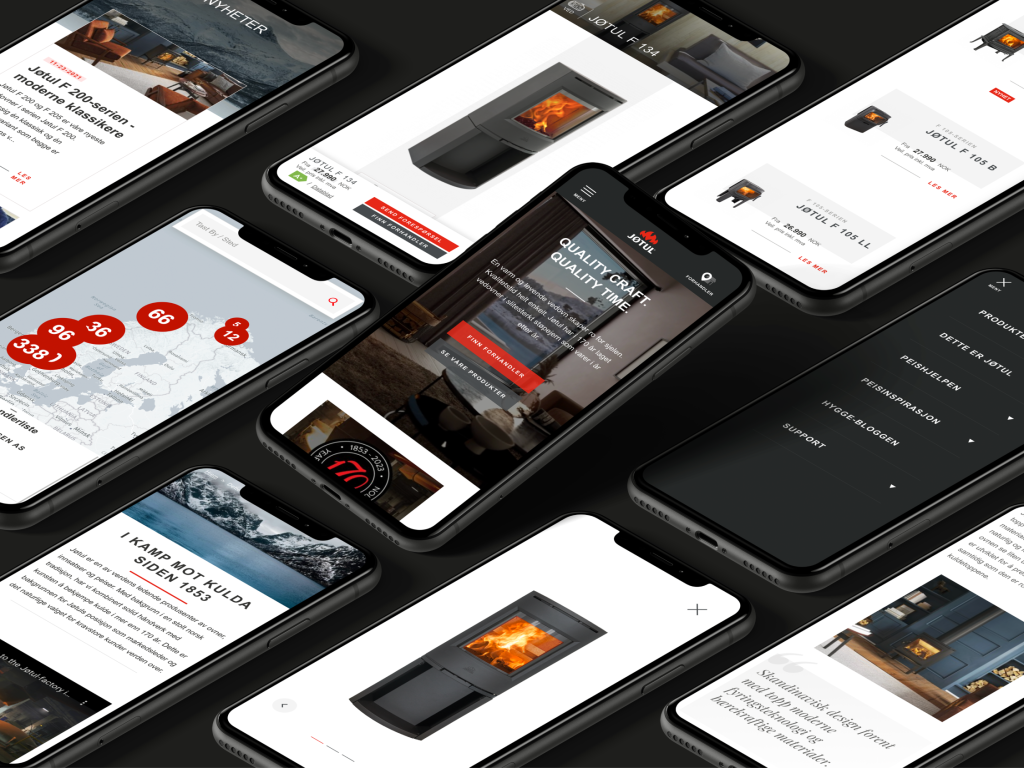

InRiver PIM
To keep all product data updated across all Jøtul websites at all times, InRiver PIM is integrated with Drupal.
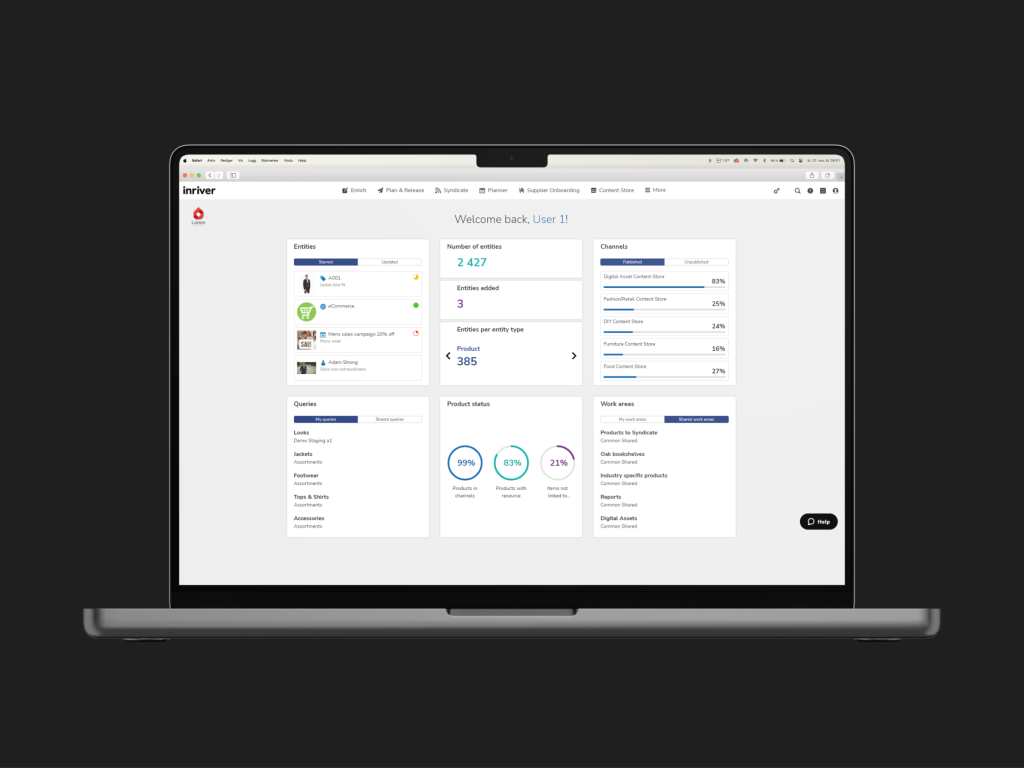

Updated information across all websites
The PIM (Product Information System) stores all product data, like product specifications, images and manuals. When an update is done to the data stored in the PIM, the updated information is channeled to right Drupal sites.
The PIM also stores and handles translations to be displayed on the different Jøtul websites. Among the great advantages of the PIM, is that the data can also be channeled to other systems. Jøtul also has some WordPress-sites, like Ildstedet.no, which display the same data.
Frontkom is proud to have done enhancements to Jøtul’s InRiver PIM integration which represent great value to the client. Automatic updates and effective debugging leaves little room for errors in content display. Managing detailed product information and media assets with frequent updates across 40 websites, is made possible to Jøtul with the InRiver PIM integration to Drupal.
Sustainability strategy
Even though business ethics, sustainability and social responsibility are well integrated into Jøtul’s culture and operations, the need to define and communicate a clear sustainability strategy has become clear in recent years. In order to meet public requirements, internal expectations and the high demands of a modern market, Frontkom has contributed in collecting relevant information from all parts of Jøtul Group, to organize and present it in a strategy document.
The document maps out goals, achievements and challenges and is a roadmap for ongoing and future sustainability work across the organization. It is also a valuable tool for leaders on all levels to communicate a common sustainability strategy both internally and externally. After completing the strategy document, Frontkom was invited to present the strategy to around 200 dealers from all over Europe at an internal conference in Jøtul’s hometown Fredrikstad, Norway.
Defining the strategy
In order to define a common sustainability strategy for the Jøtul Group, Frontkom interviewed responsible leaders across the organization. A considerable part of the job was to go through practices, documentation and reports from the different factories. For all parts of the group to work according to the same strategy, it was of great importance to define priorities and goals, and to be aware of the extensive sustainability work already carried out across the enterprise.
Based on findings in the interviews and a considerable amount of documentation and reports, it became clear that Jøtuls sustainability strategy rests on 3 pillars:
- Circular: Jøtul Group Circular is the path for producing products focusing on recycling, durability, high quality and re-usability. Jøtul has long traditions and a well-developed production system for producing new and clean burning products with reused materials.
- Education: Jøtul Group Education is the method of showing responsibility for teaching end-consumers to use the products in the most appropriate and environmentally-friendly way. Jøtul will also educate suppliers and dealers on how to utilize the company’s value chain in the best possible way.
- Environment: The Jøtul Group Environment principle aims to guide the enterprise towards decreasing the environmental impact of its operations. Jøtul is focused on reducing emissions related to the power-intensive production and the general logistics in the whole of the company.


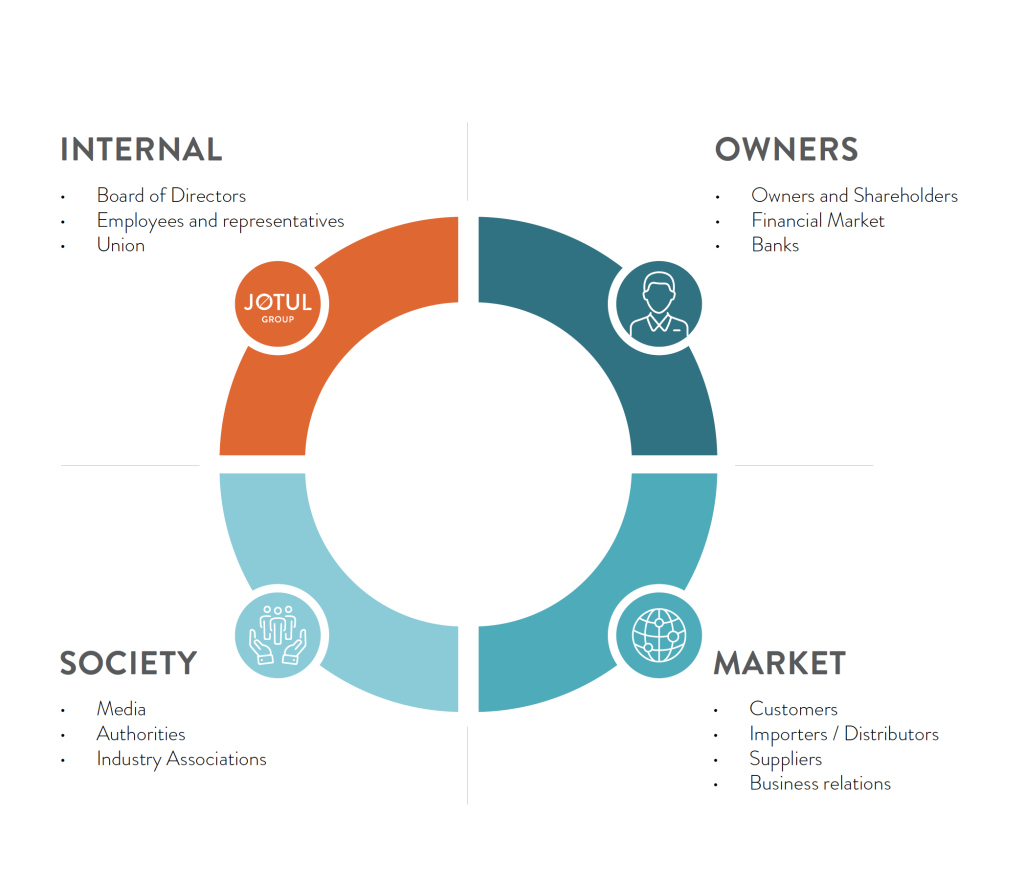

Communication is key
Communicating the sustainability strategy to relevant stakeholders is a crucial part of the process. The complexity of the target groups shown below illustrates the importance of having a well defined strategy to communicate how Jøtul Group takes responsibility in all parts of the organization. Defining the 3 sustainability pillars, makes the strategy document a valuable roadmap as well as an appreciated tool for both internal and external communication.
The strategy document written by Frontkom defines how Jøtul Group communicates sustainability internally to the board of directors, employees, representatives and unions as well as to owners and shareholders, the financial market and banks. External communication involves all parts of the market, such as customers, importers/distributors, suppliers and other business relations. Included in the communication strategy is also PR-work and information towards the media, authorities and industry associations.
As a future oriented enterprise, Jøtul is committed to constantly improving how they work with sustainability. An internal Environmental Engineer is now responsible for further development of and reporting on the sustainability strategy.
Does this sound interesting? Get in touch with Anna 👋


Anna
Senior advisor Sales







